Situation
Adults struggle to organise Social Care within a complex health system.
Task
Design a solution to simplify access to home care after hospital discharge.
Action
I created a healthcare ‘one-stop-shop,’ developing user personas, journeys, and prototypes. Research, interviews, and A/B testing refined visual designs and AI chatbot interactions, improving clarity, usability, and the overall patient experience.
Result
Users responded positively, noting the app’s ease of use and wishing it had existed when seeking home care for loved ones. I further mapped the customer journey, collaborating with the PO, CEO, and IA to identify key touchpoints where AI could enhance the experience. Initial sketches simplified the needs of both Requesters and Carers, breaking complex information into clear sections.
Users said they wished they'd had this app when seeking Home Care for their parents.
Prototype presentation
Visual design and journey created to demonstrate intuitive concepts to stakeholders, addressing care needs, costs, user concerns, and carer wellbeing.

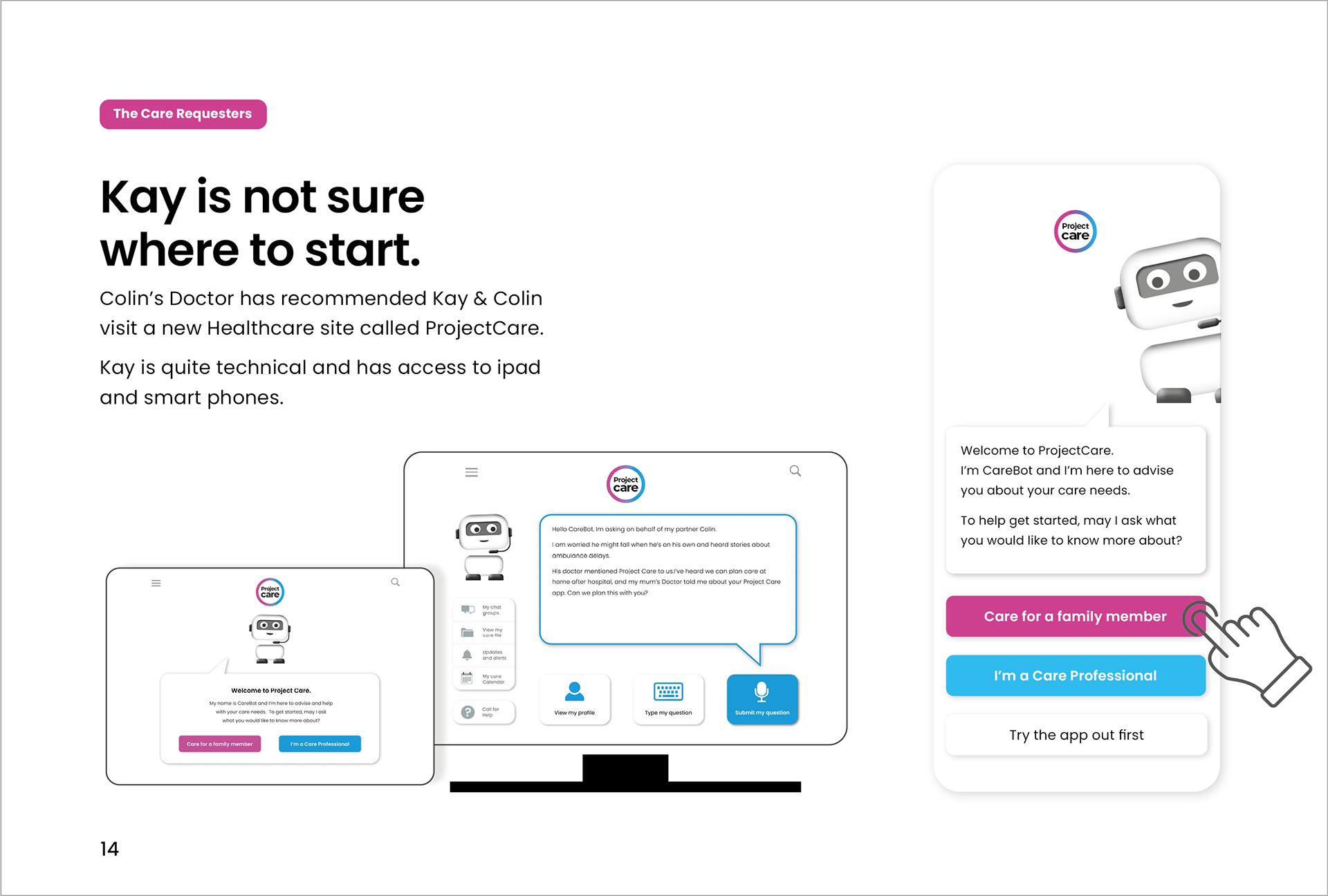


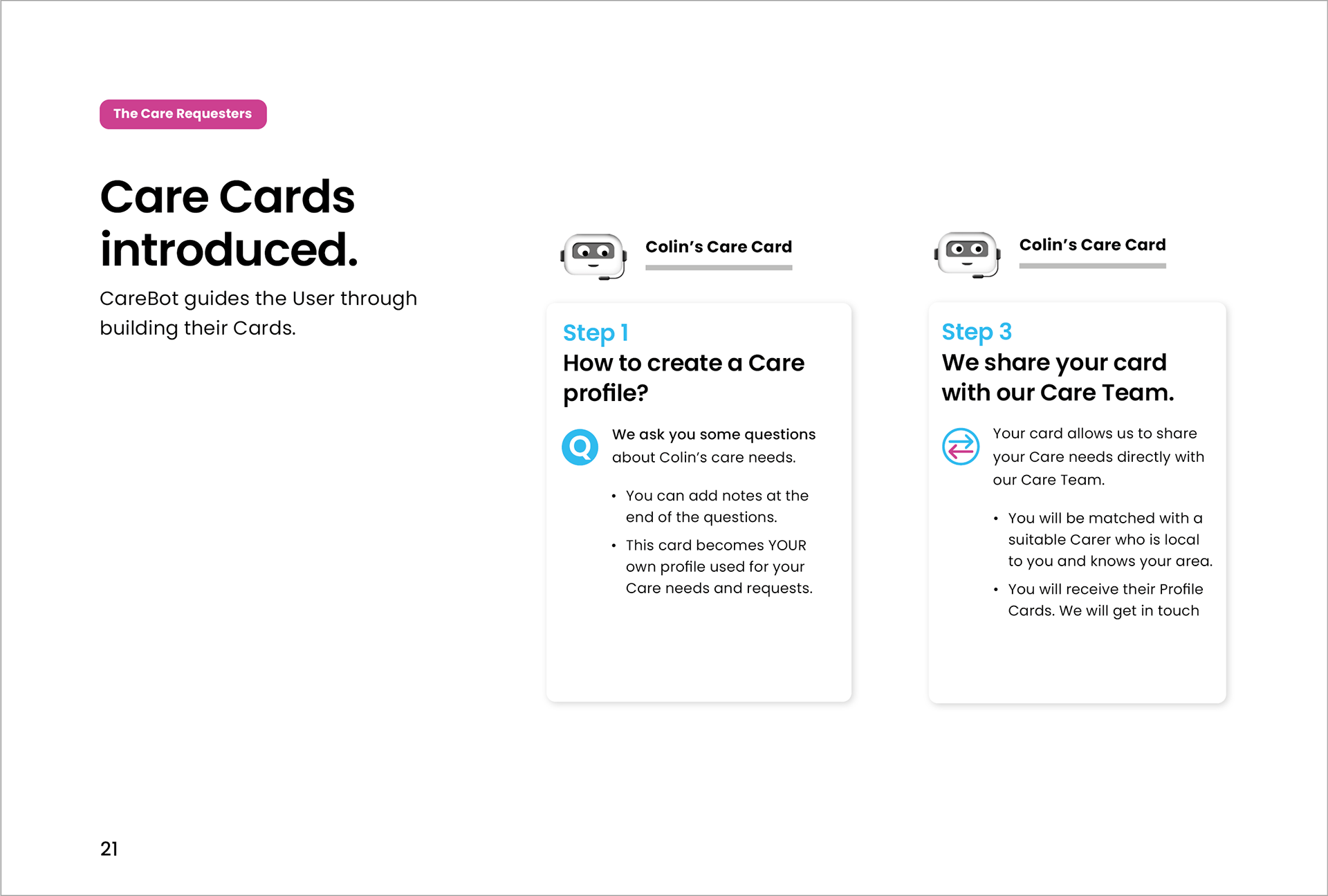
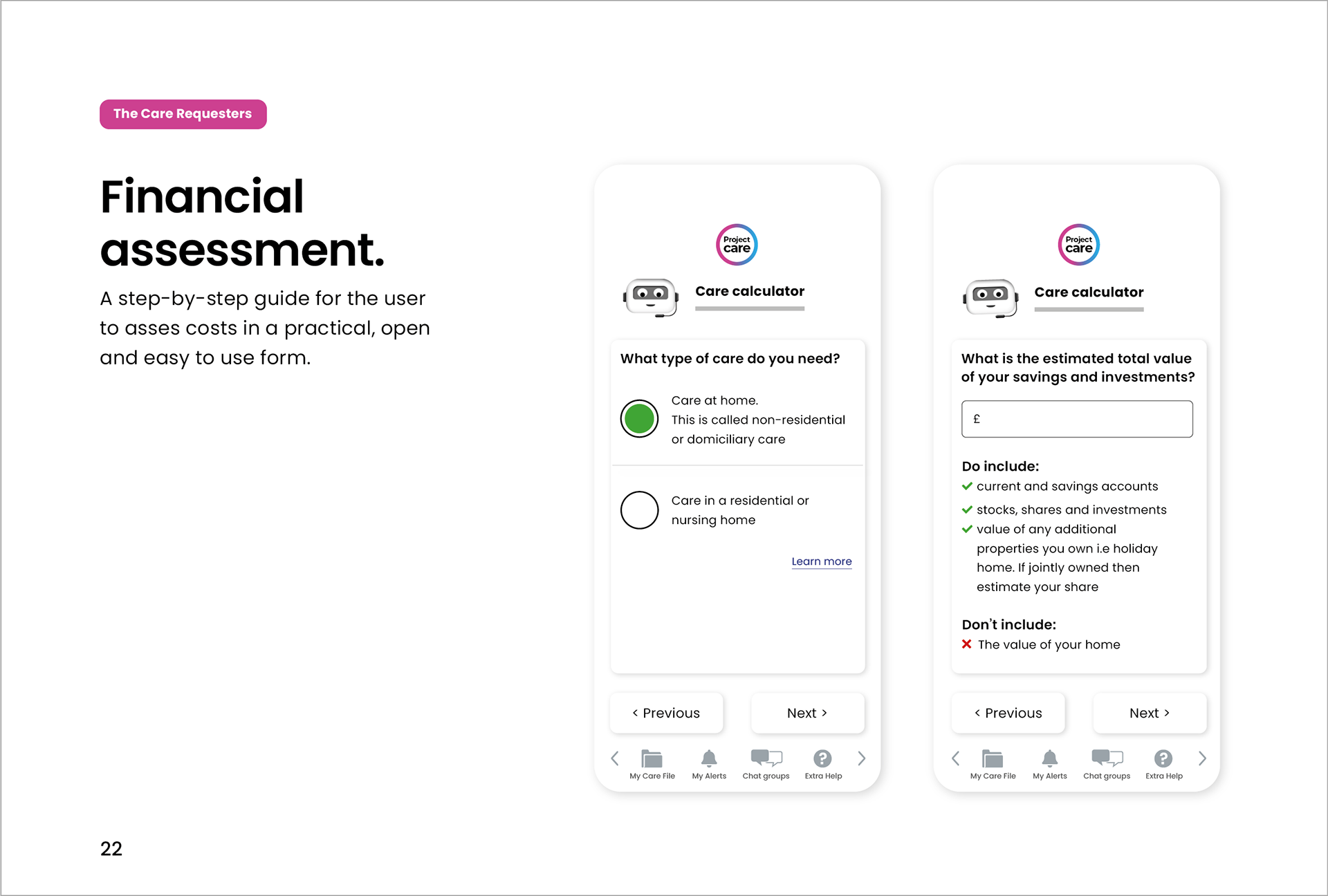
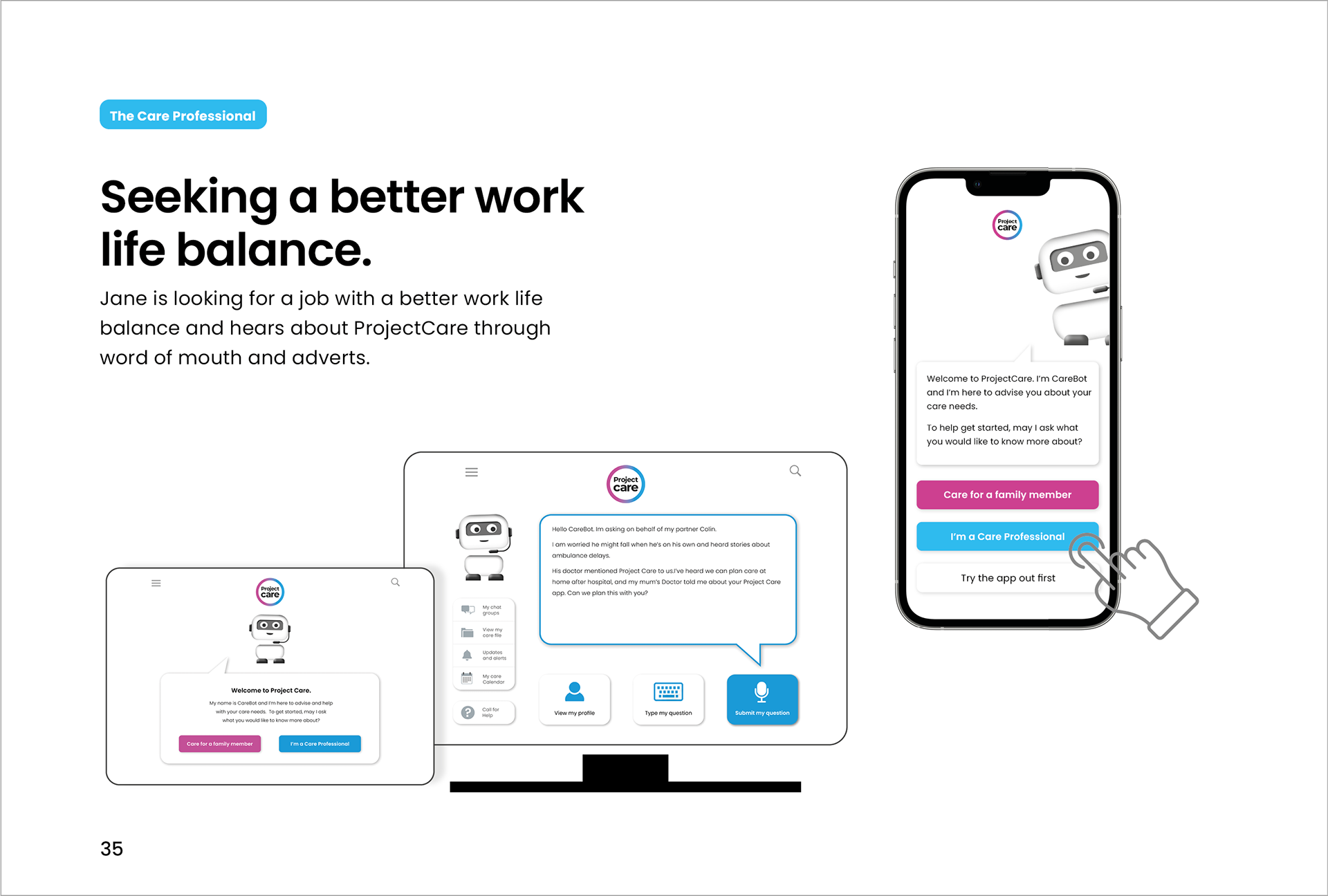
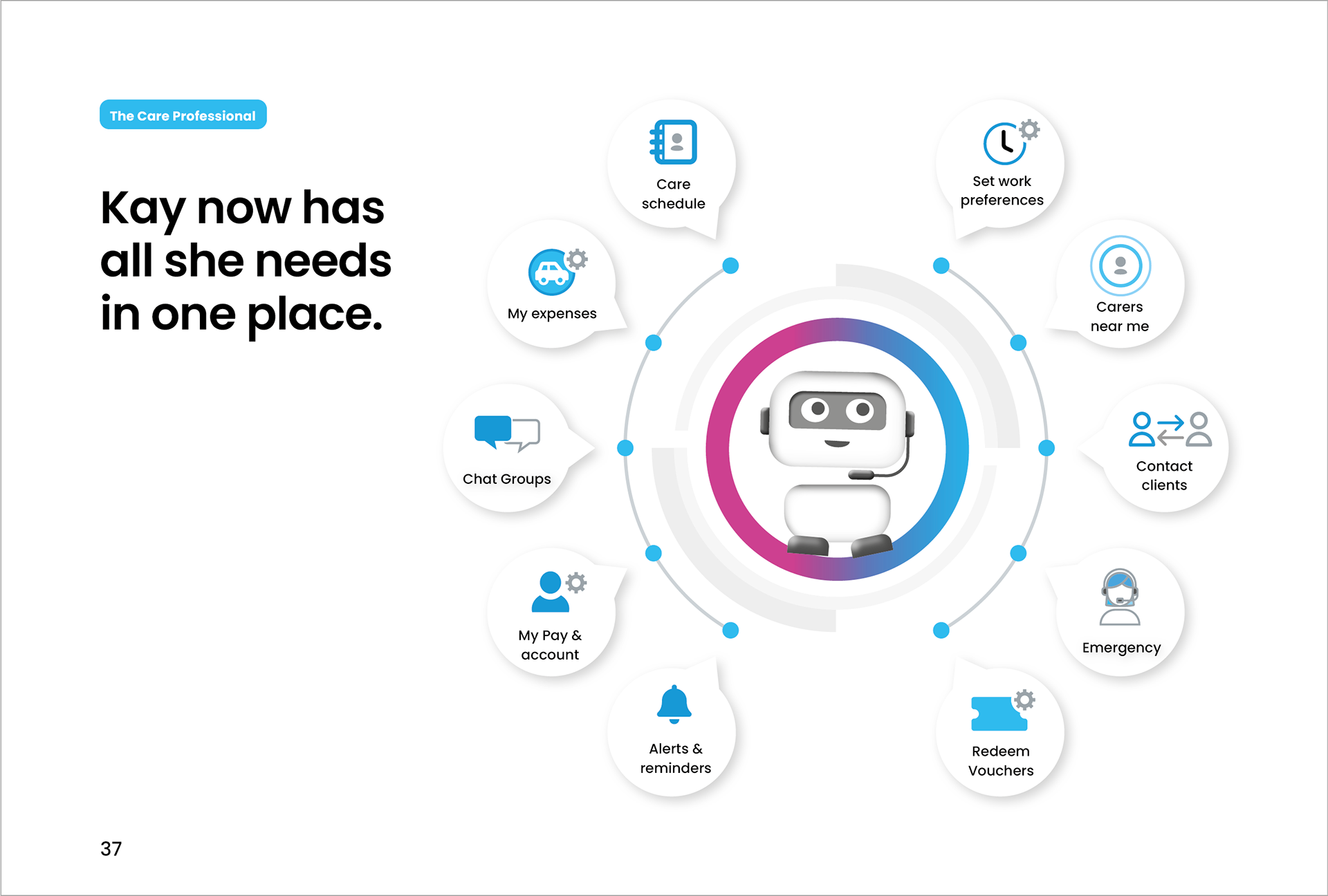


Detailed development
Mobile first design using icons to clarify sections and services, iterative changes defining function and use. Vibrant Health associated colours used for Icons and Illustrations, carried into functional screens and finance, assessments and needs. Colours and icons built for easy recognition and their 'own' Ai avatar guide.

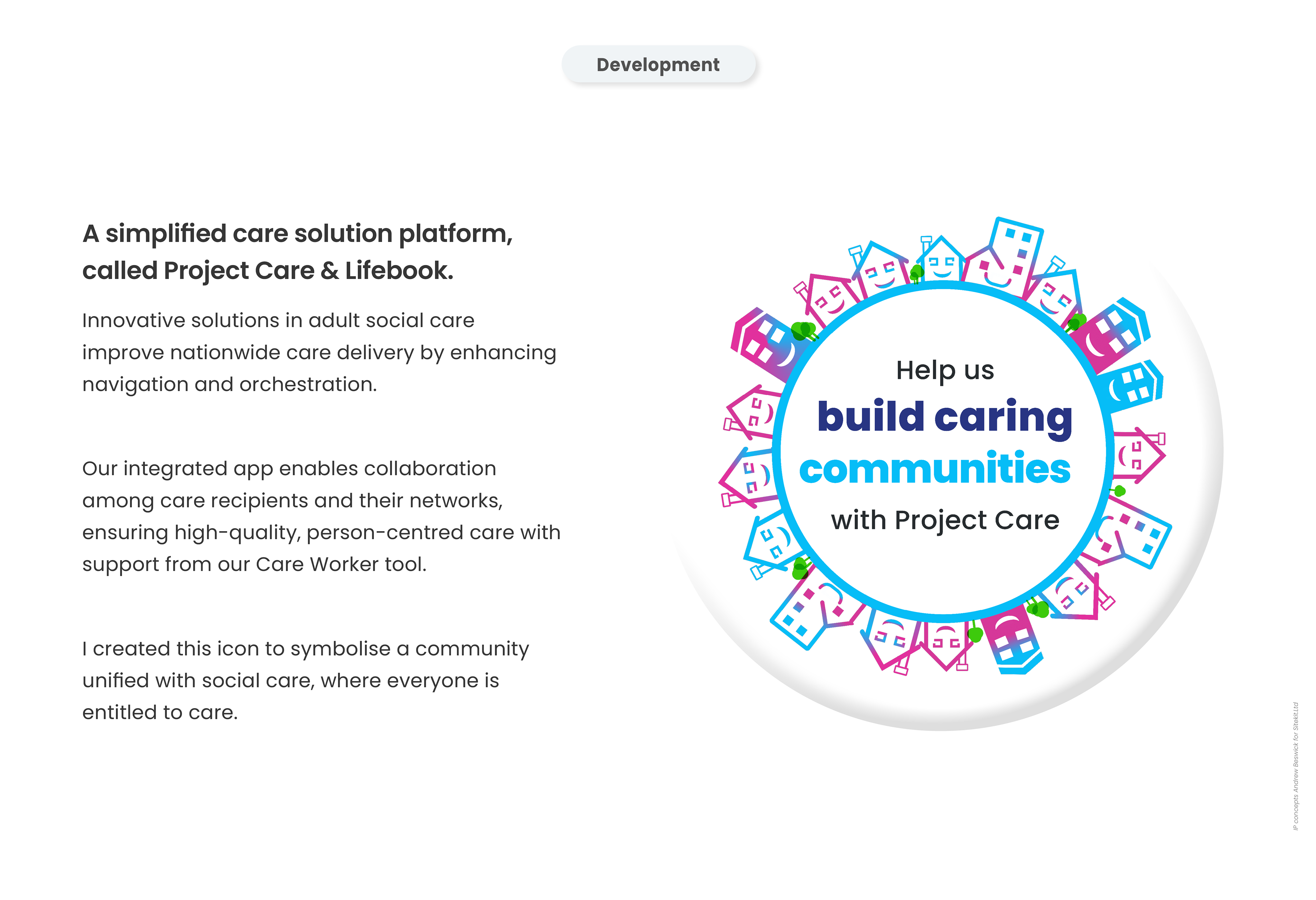
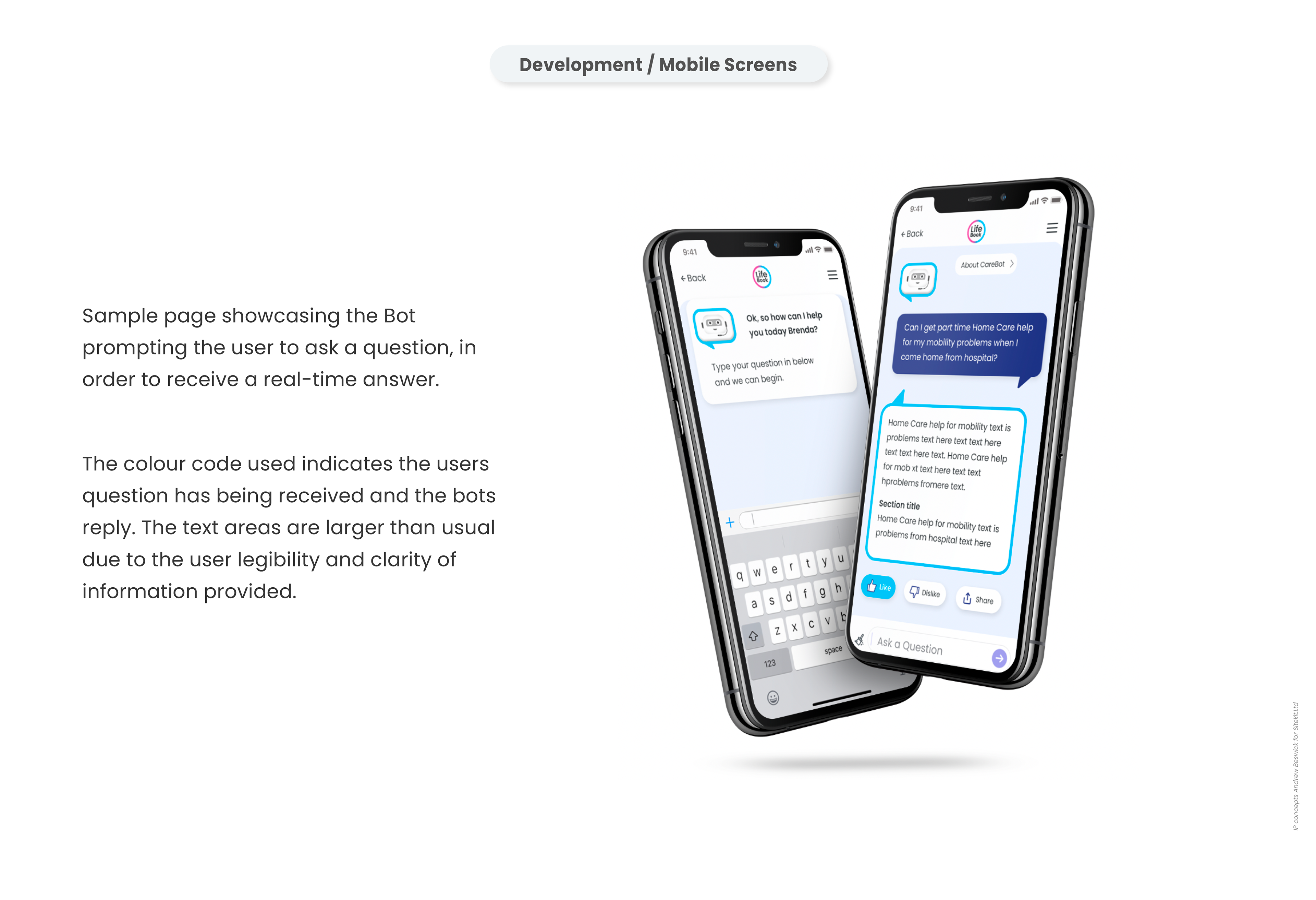

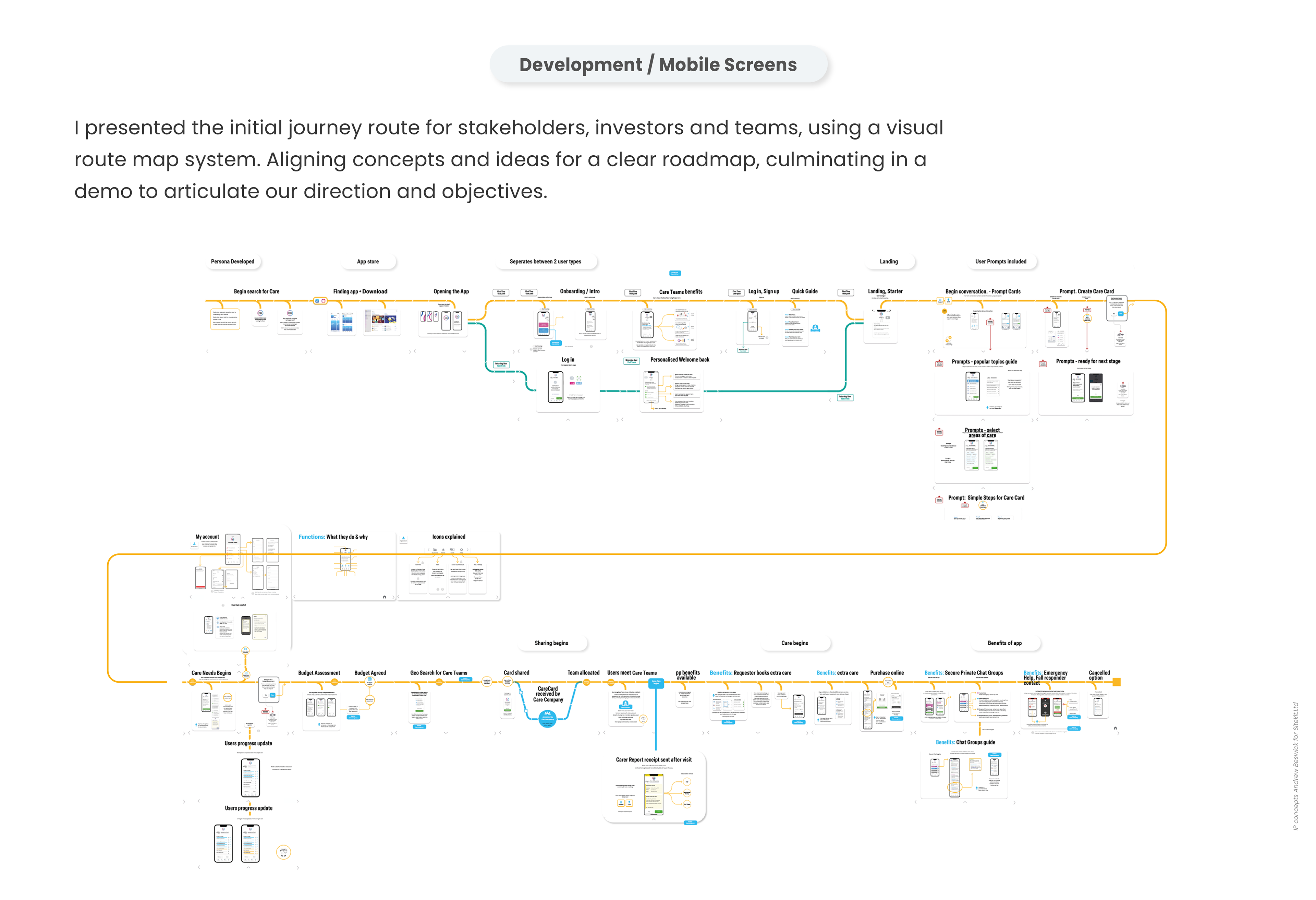
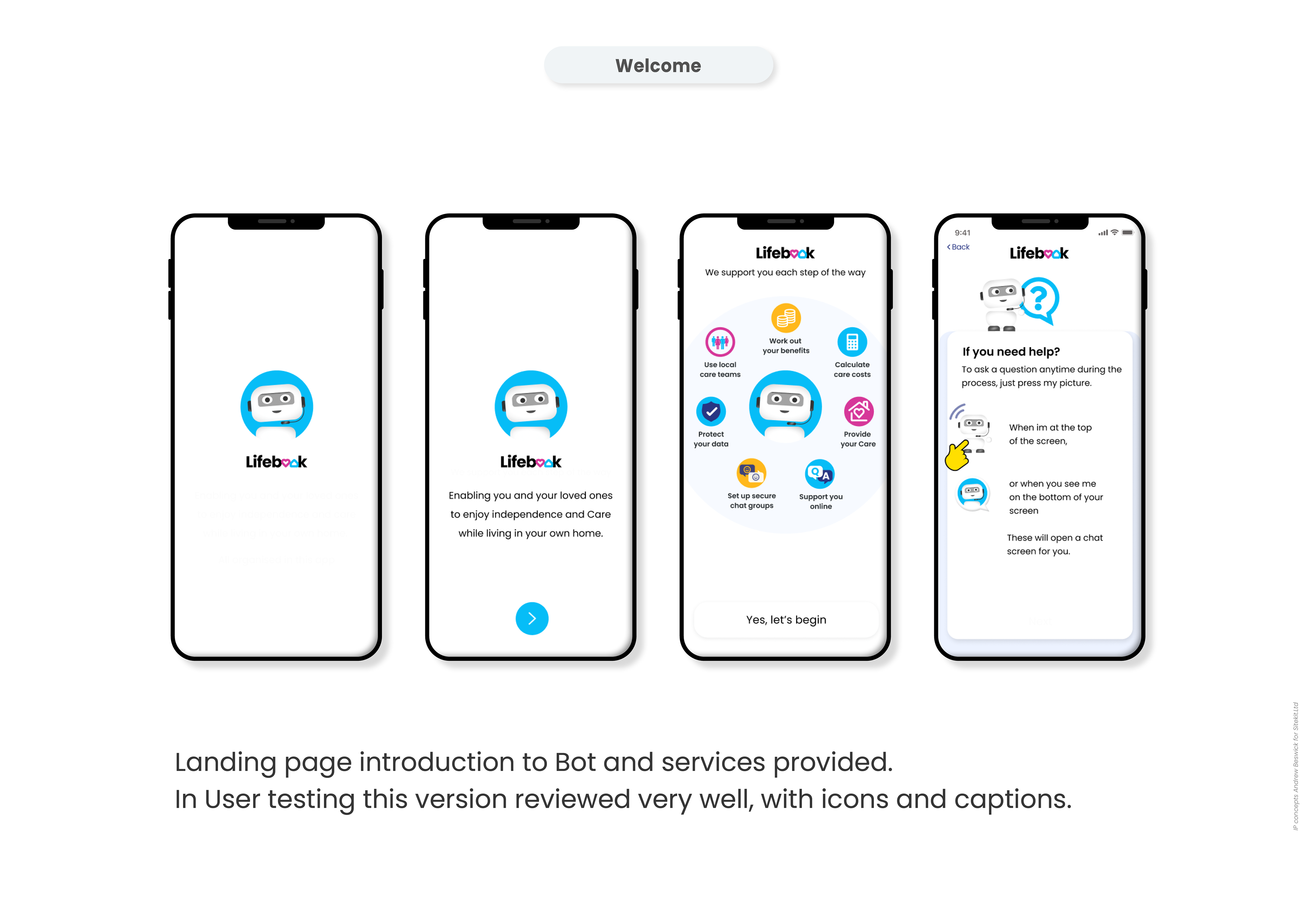
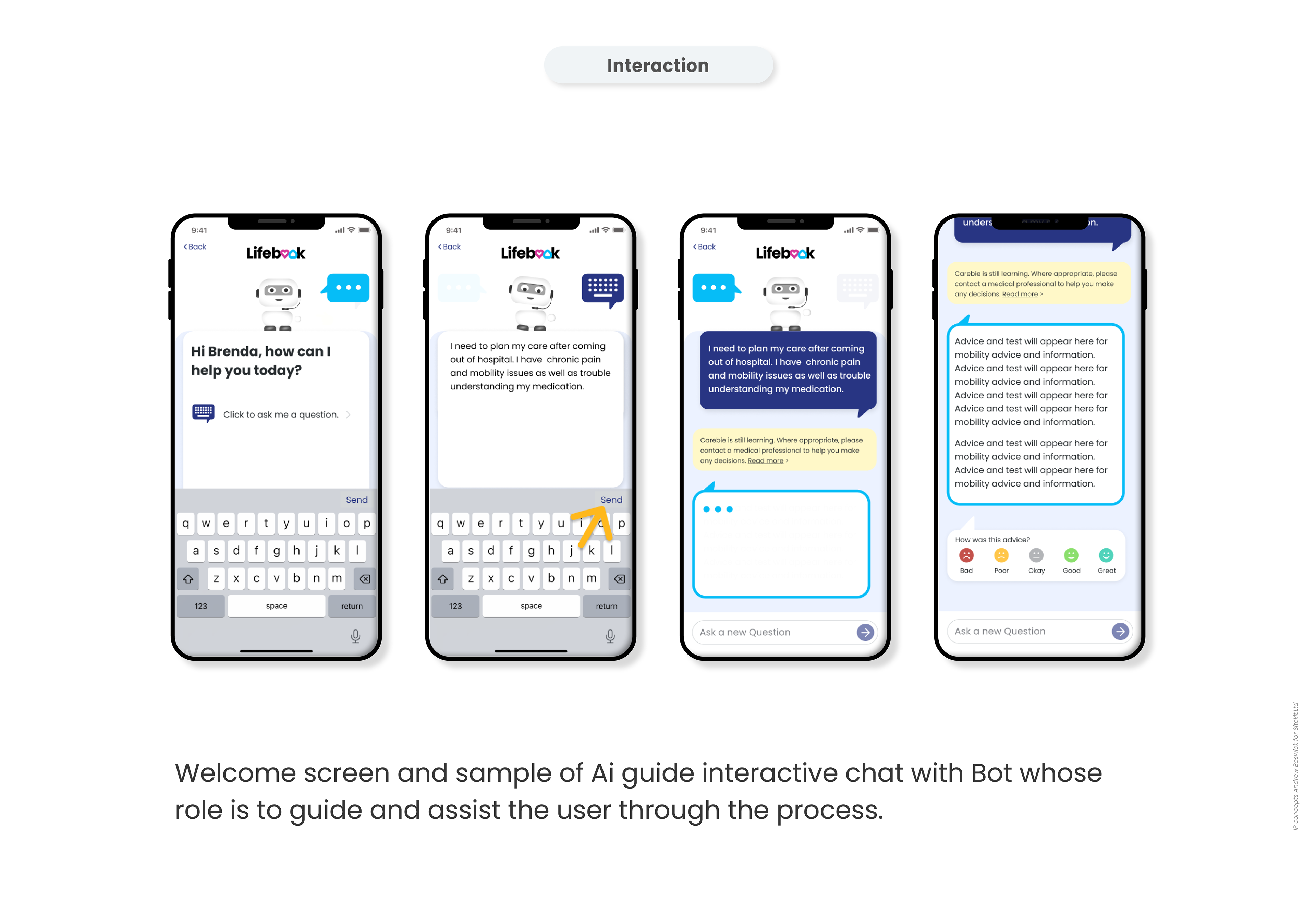
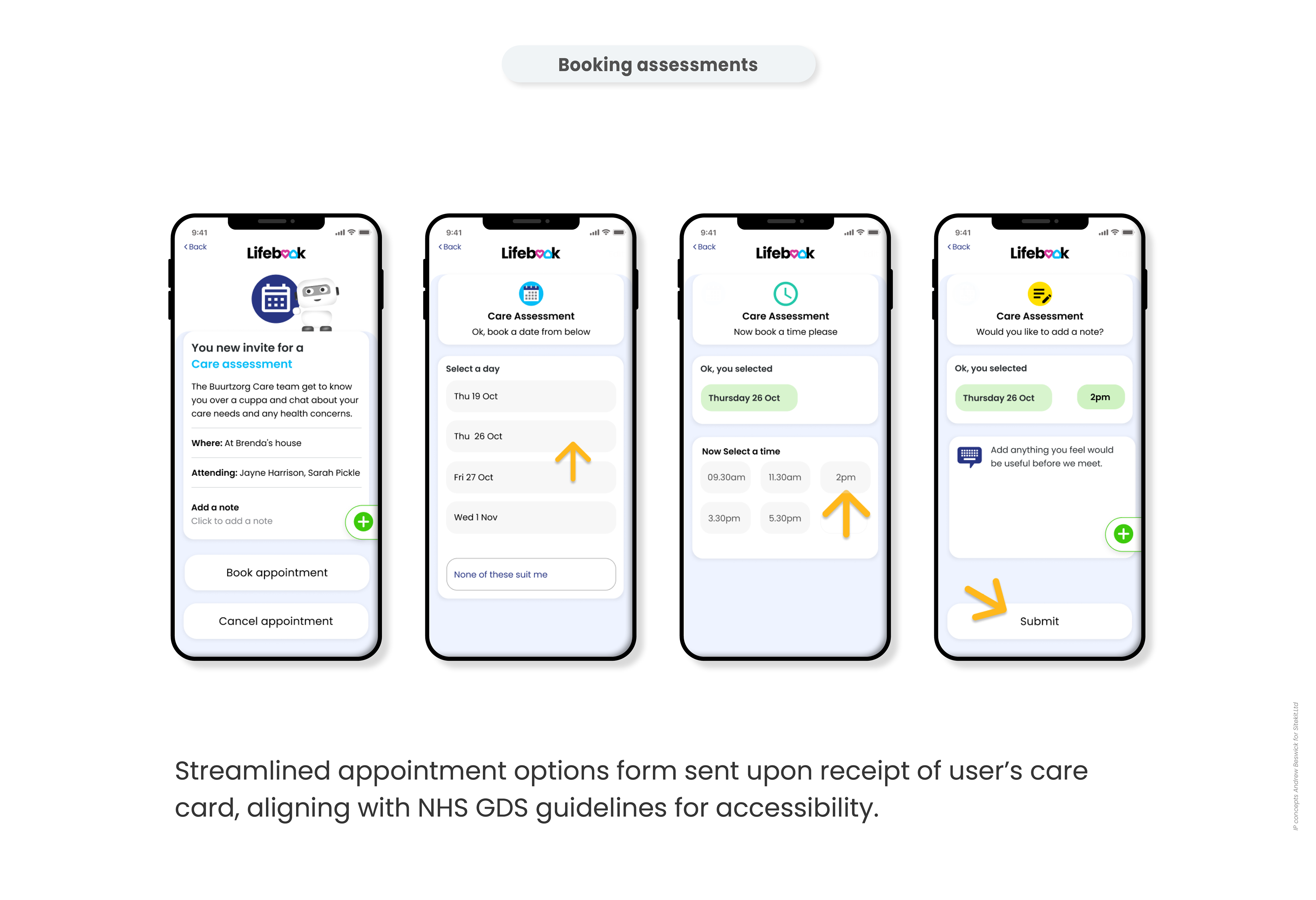
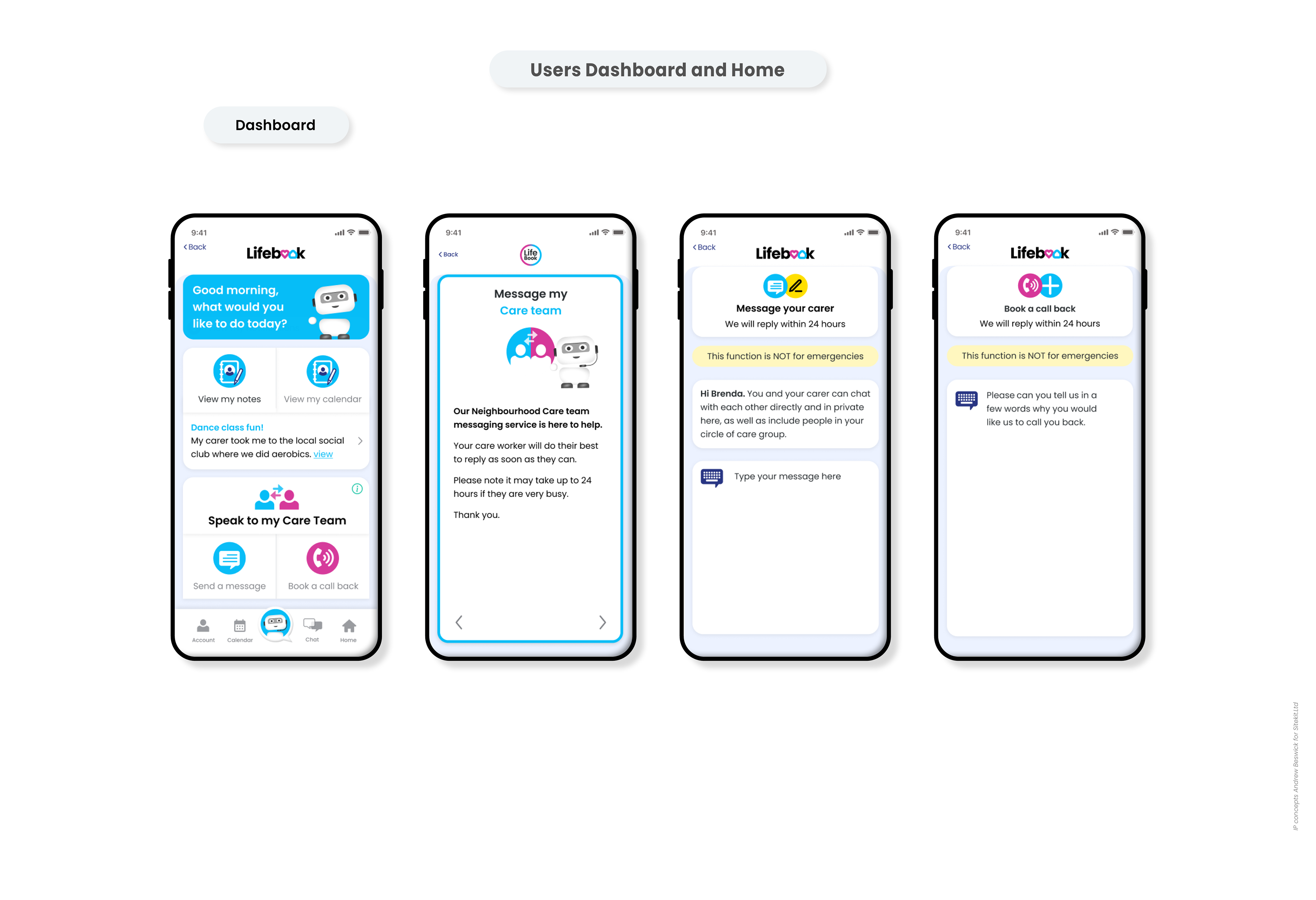


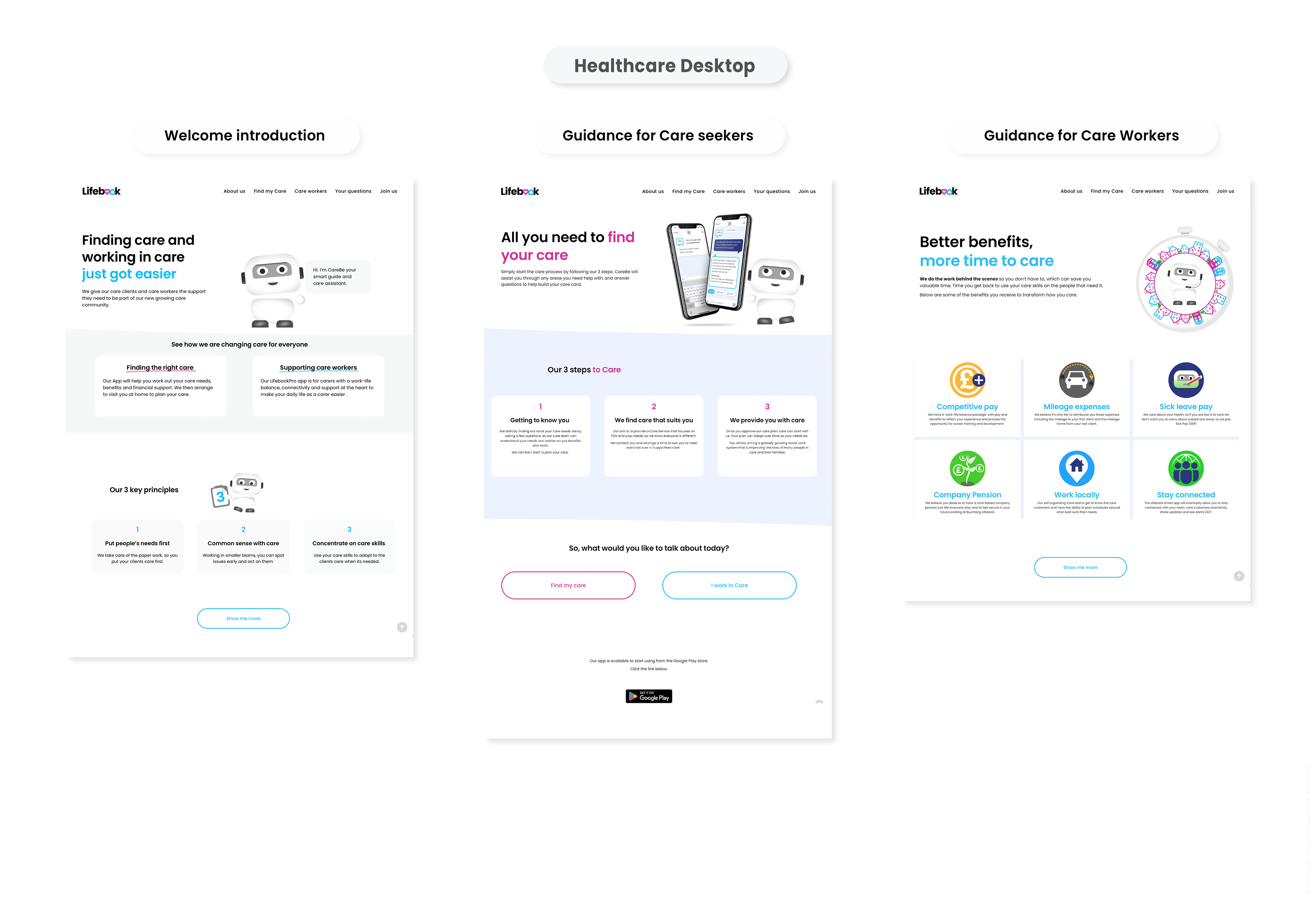

Figma Journey development
Placing guides and titles on Figma to allow teams to view design thinking and pop up sections.
Data architecture flow
Focusing on user needs, I created journey steps for a Slide Deck to illustrate accessibility ideas. I introduced UCD pop-up Help Cards, CTA points, and soft prompts to enhance user understanding in unclear areas.
Leveraging my Graphic Design/UI background, I built the Slide Deck around two key personas, showcasing a visual flow with alternative states to help stakeholders and investors visualize our mission and Service Design approach.
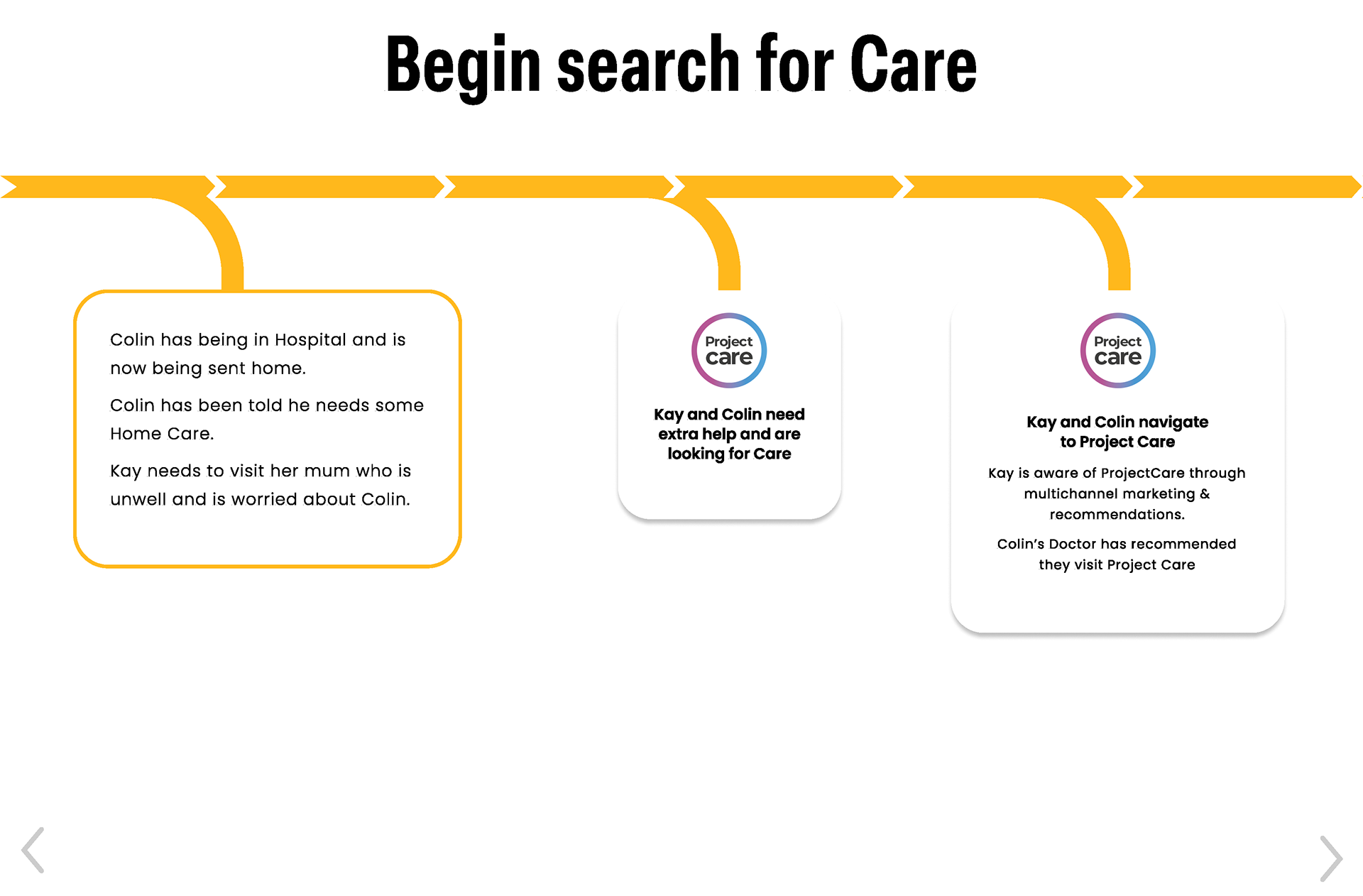

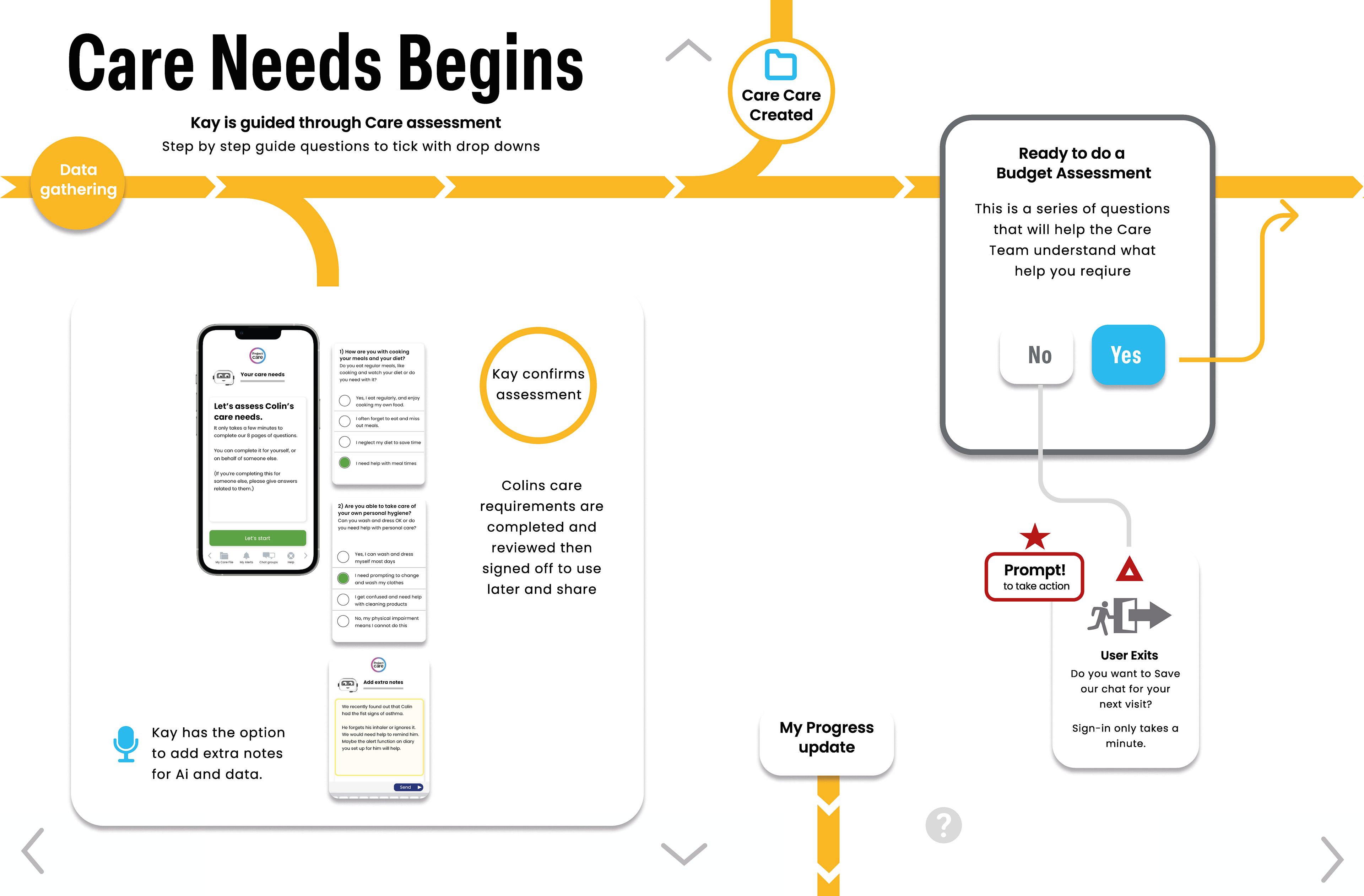

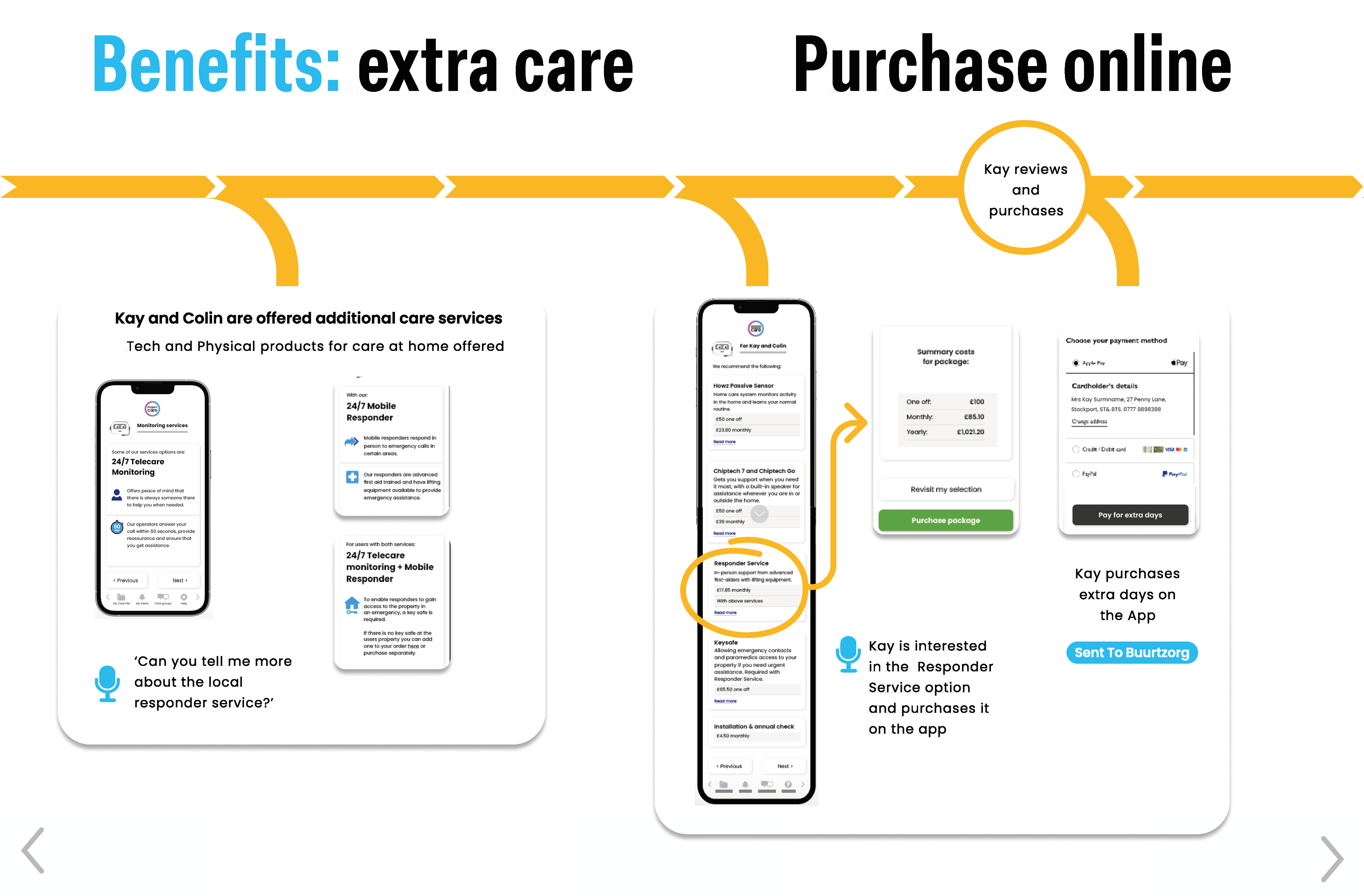

My goal was to create more than just another 'sales' bot
Creating and integrating an AI avatar guide that went beyond a typical “sales” bot. After researching virtual assistants in medical and government sectors, I developed a friendly, human-like AI avatar integrated it into the product design and summarised the development and sketches into the Slide Deck.
Combining the team's work into a slide deck journey, along with proof of concept and research won a round of investment and garnered praise for research and the Cute humanised Avatar Bot design.
After researching virtual assistants in medical and government sectors, I developed a friendly, human-like AI avatar.
Agile logo design 'start-up'
You know the scenario - you get a logo finalised then we change the product name. Taking a pragmatic approach to evolving start-ups, I designed alternate logos as the project name and focus shifted. I used consistent brand colours to reflect core values—health, trust, care, and passion—and created a circular design to symbolise holistic care.
As the project name changed, I adapted the logo to fit each new identity, including a pulse for Neighbourhood Care and finally, LifeBook. I incorporated "Home is where the heart is" by animating icons into the logo, symbolising the unification of social care at home.
Refined for impact
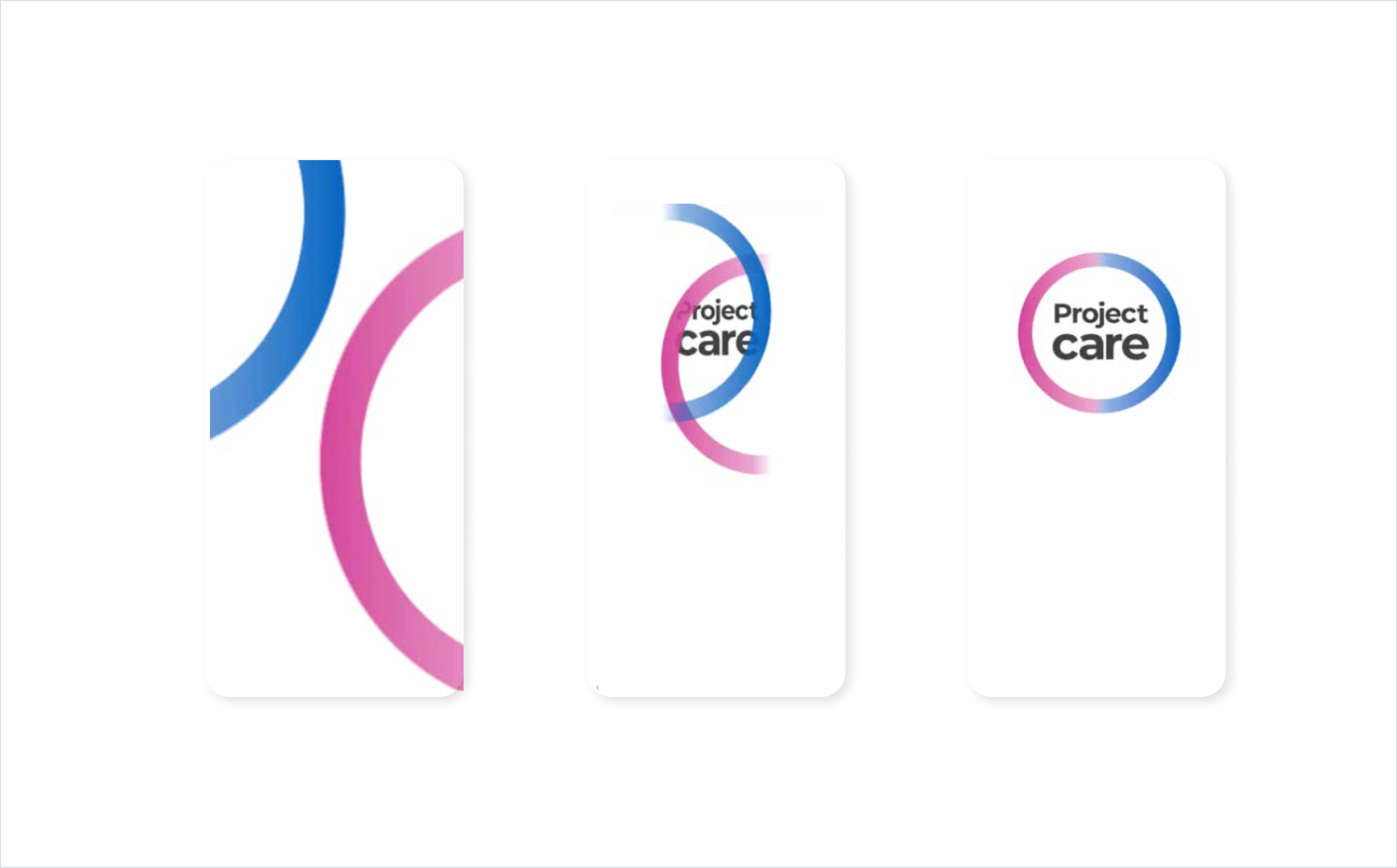
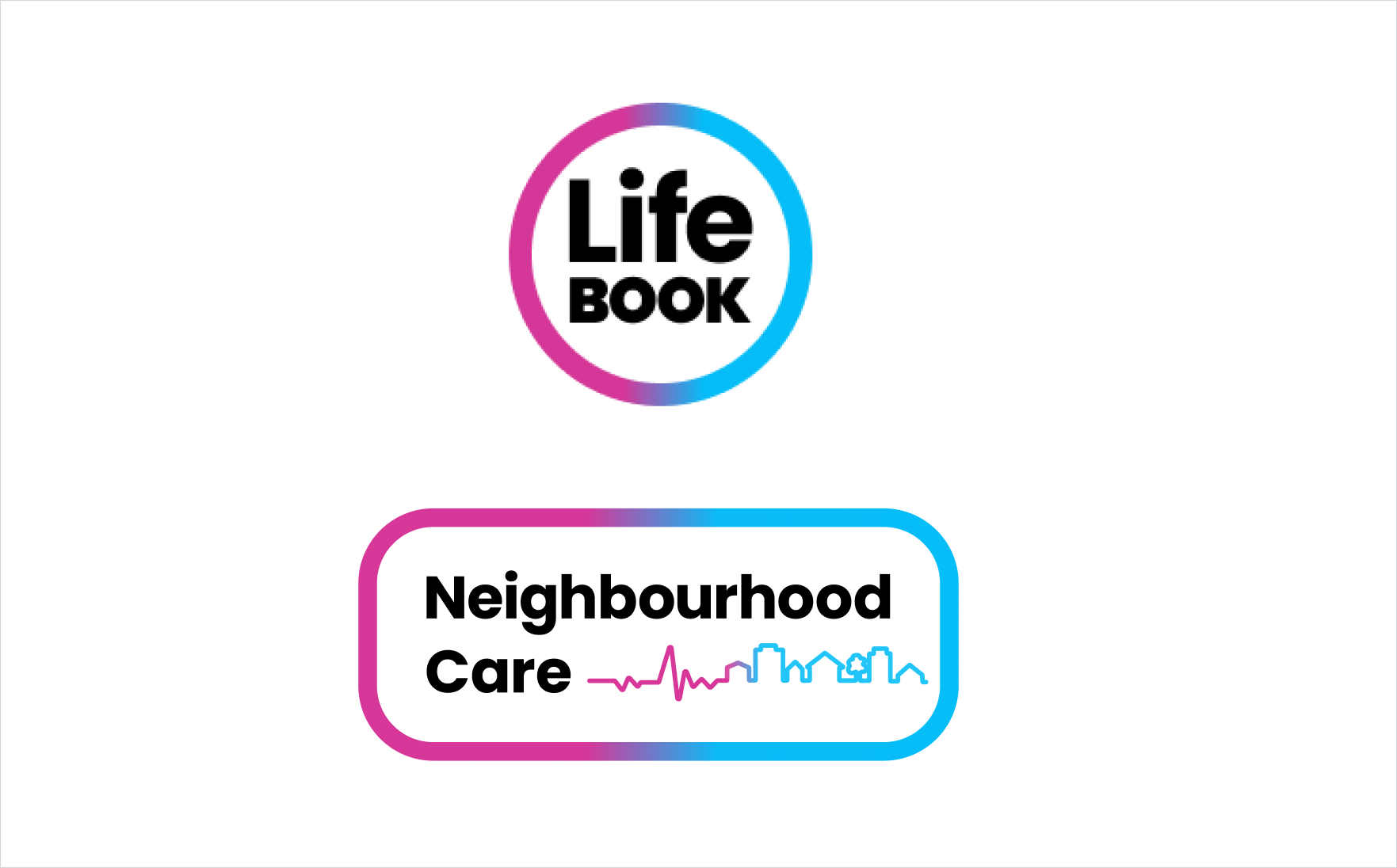
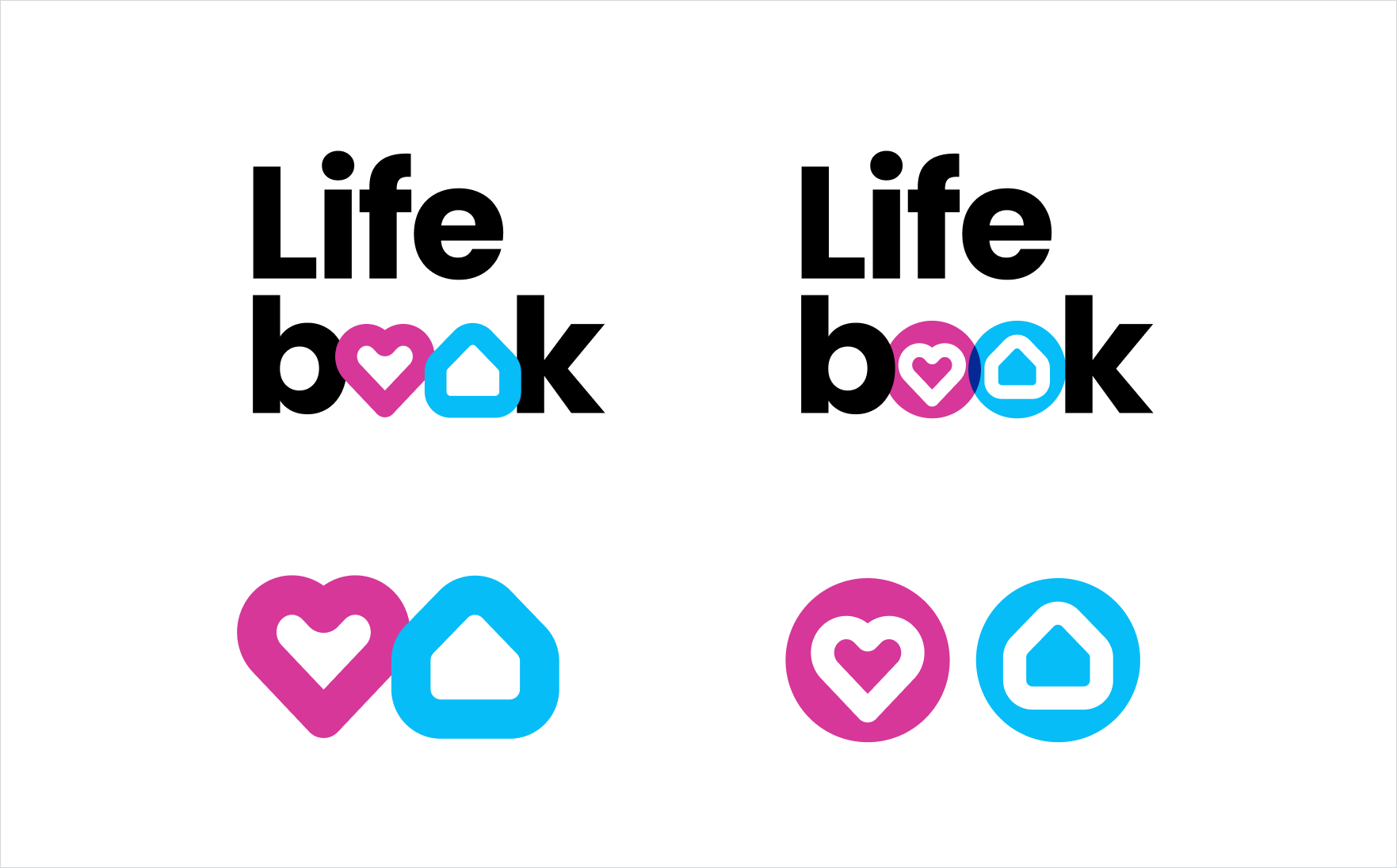
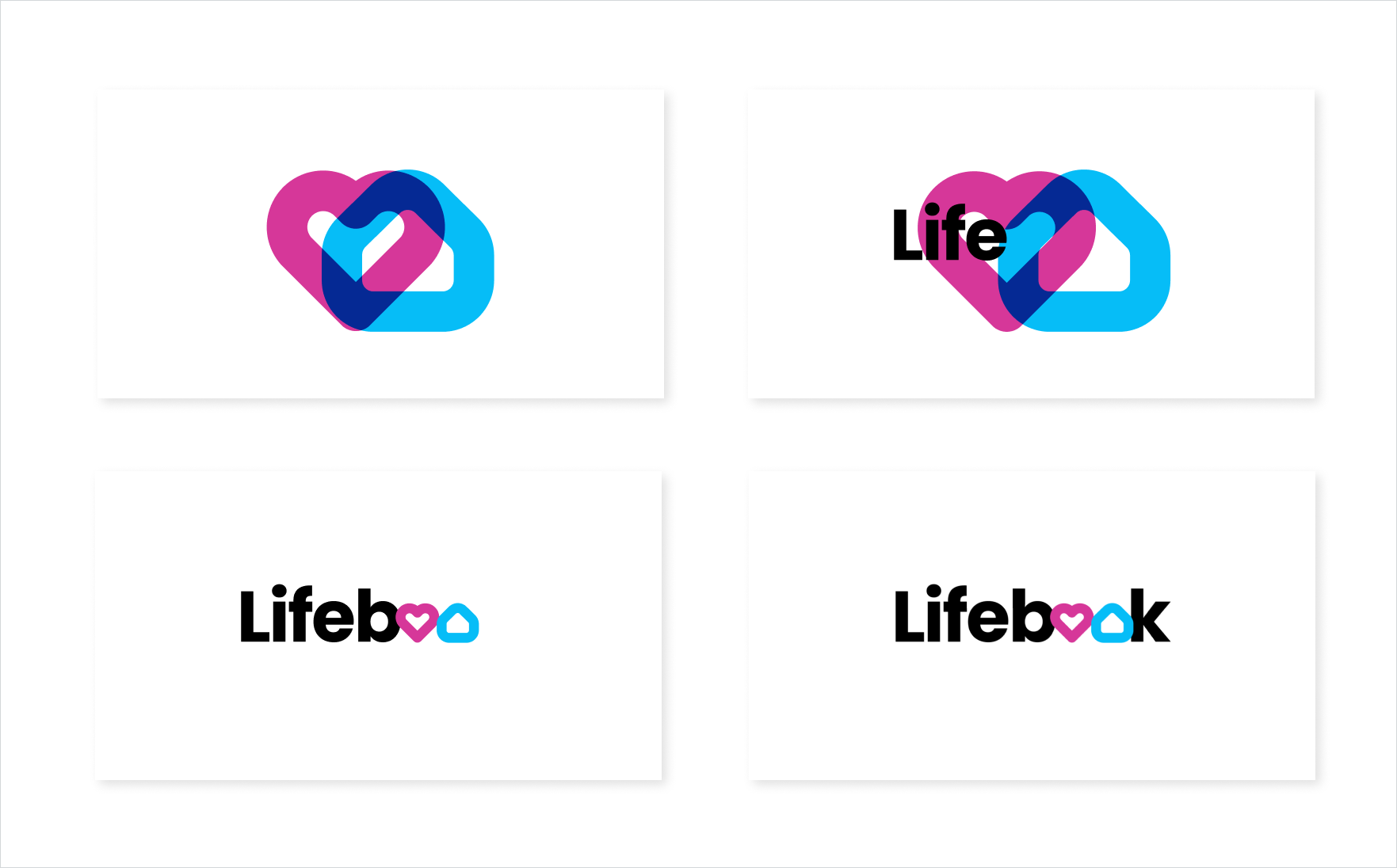
Healthcare colour pallette
Linked to colour psychology and associations, the palette was kept simple yet effective. Fonts were carefully selected and tested for accessibility and legibility, considering future-proof usage.
Proactively development, building on user needs and ease of use
The Bot, designed to be warm, empathetic, and trustworthy, leads the app by introducing itself and assisting users immediately. It interacts in real-time, addressing care location issues and answering questions as a personal AI helper.
Using an agile approach, I refined the design based on initial testing. Feedback was positive, highlighting the AI Bot Host, clear icons, and legible layout. Users and carers appreciated the new finance, health, and guidance features, as well as the secure chat functions connecting them with family and carers.


One fits all' dashboard
Designed a user-friendly dashboard as a central hub for notifications, messages, and updates, using consistent icons for intuitive interaction. Key functions are easily accessible, ensuring seamless social connections for users and their families.
Building Patient Trust
The AI host, designed for clear, user-friendly interactions, was well-received in testing. It guided users through topics like finances, training, and work-life balance while answering questions promptly. Users valued the ability to personalise the Bot, deepening emotional engagement and making it something they could proudly share with others.


Integrating AI med tech, and the benefits of signing up
The landing page introduces the concept and offers distinct paths based on care needs. The AI bot is introduced immediately to build curiosity, familiarity, and trust, particularly for older users who might find a complex avatar unsettling.
For Care Requesters: It guides seeking care, assessments, health, finance, and benefits.
For Care Workers: It offers information on joining a new company with better benefits, focusing on finances and work-life balance.
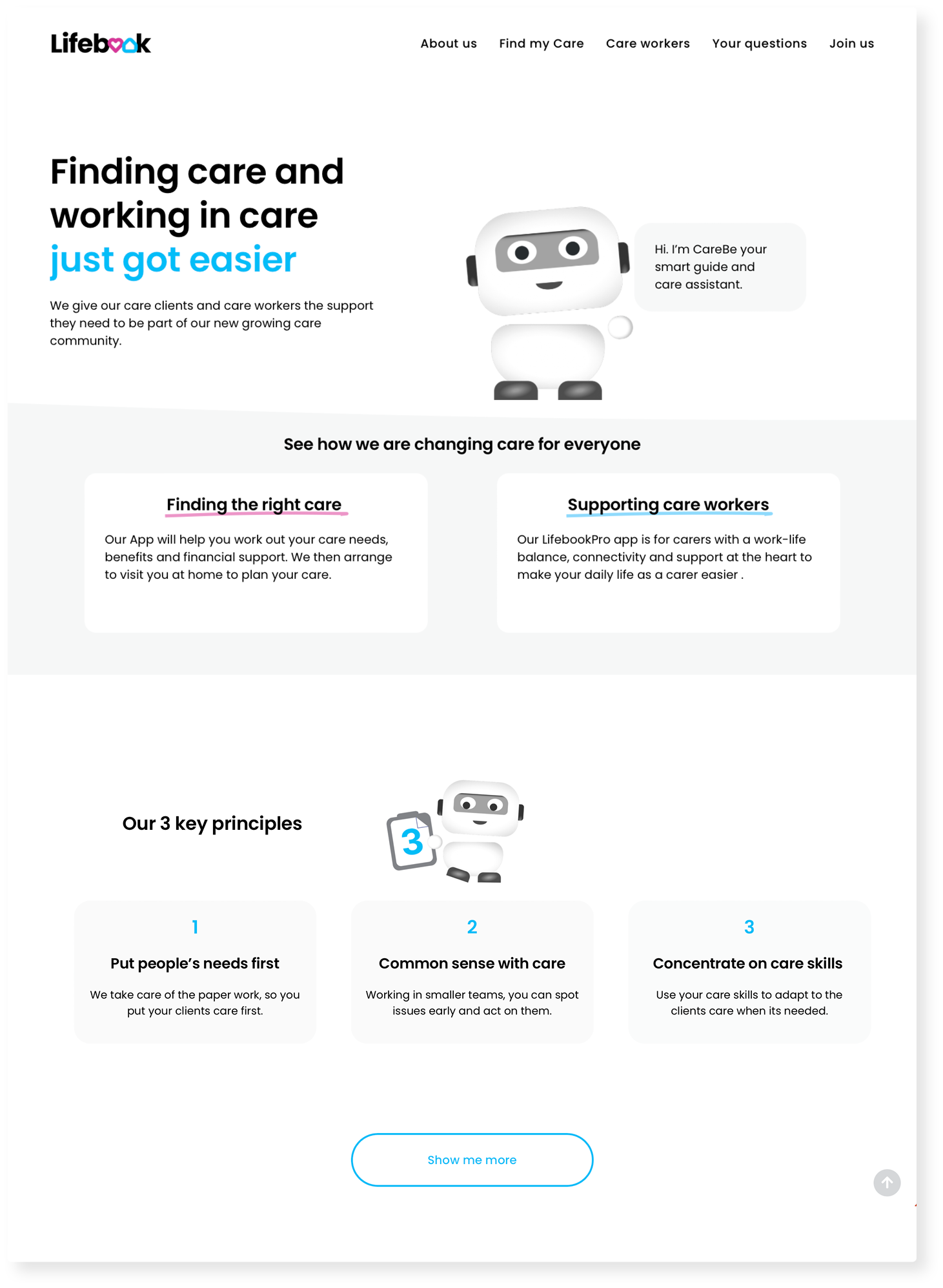
My goal is to improve life for families and carers.
I created an industry-disrupting solution focused on navigation and accessibility, designing a user-centred platform for finding care easily.
This Boosted Patient Loyalty. Users found the AI Bot engaging and emotionally connecting, with Pop-Up Help cards making navigation effortless. Many wished they had this app years ago for home care.
The empathetic AI Carebot, customizable to user preferences, offers comfort and support around the clock.